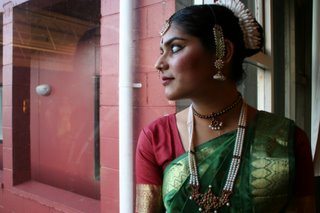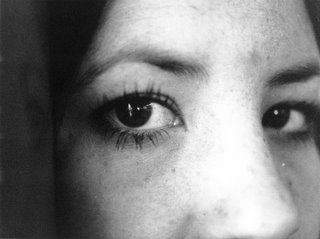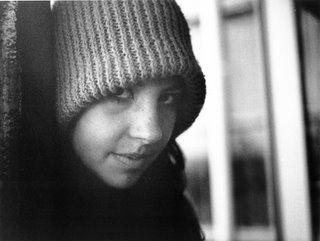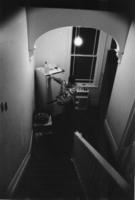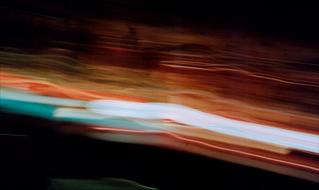I have created a new blog through a new provider - Vox.
So in future visit lightandtexture.vox.com
I will attempt to load all my past posts there so stay tuned.
lightandtexture
No Fear/360/Emotion - Peter Livingstone's photographic creative diary
Thursday, August 24, 2006
Tuesday, August 22, 2006
The ways of digital - part two




As a follow up to this past post here are a few more images from the series. Since the first post I've spent quite some time thinking over the whole issue of going digital. I'm very aware of the long term archiving issues and they are well documented in all forms of media, but with the trip approaching I can definately see a lot of benefits to embracing the digital world.
However, and it is a big however I don't see how digital fits into my photographic style and extensive use of black and white. Certainly this is one are in which film beats digital hands down. An opinion shared by many (including digital users).
So there is an interesting internal battle being played out in my head on whether to purchase a digital camera. The easy money is on me giving in and purchasing a Nikon D70 or possibly the about to be released D80. Would be great to be able to afford a Nikon D200. One day maybe, one day.
A digital would be a great way to explore London and develope my love of photojournalism and street photography. But I still have a hankering for film and infact am keen to discover what medium format cameras (6x7 & 6x9) I can uncover in London. Now if I had to choose between a digital or say a 6x9, the 6x9 might just win if the price was the same. If either one was a bargain then I'd guess I'd just have to get both.
Update - Landcape of the Body
Previously (June 2005) I posted on a project I have had under development for some time. Well, recently I had the opportunity to actually shoot some images for this project. I have to thank my willing and brave models who ventured out into a very cold wintry Wellington night. I really must say I found the whole proces very challenging indeed, from dealing with the lighting to trying to be at ease with a nude model. In all honesty it was rather intimidating and I can only think it will be a lot easier when the second session is under way.
The session met all my objectives as really, it was a trial of the lighting, film selection and poses for the models. It was a great learning experience and certainly pushed me outside of my comfort zone. It has made me rethink the whole project - what am I trying to achieve, the poses and all the technical issues. I was really disappointed with the lighting and this requires a whole new approach.
One other thing I found fustrating if not disappointing was the quality of the prints from the lab who are normally quite reliable. I happened to pick the one day when the person who normally does the printing was away. What I need to do now is spend some time in the darkroom working the print into a quality where I can make some decent judgement on the 'where to from here'.
I would love to be able to post some samples of the session but once again I am having trouble uploading these particular images. However, I will keep trying.
Update: having failed to be able to upload these images, please visit my alternative blog lightandtexture.vox.com I have posted them there.
The session met all my objectives as really, it was a trial of the lighting, film selection and poses for the models. It was a great learning experience and certainly pushed me outside of my comfort zone. It has made me rethink the whole project - what am I trying to achieve, the poses and all the technical issues. I was really disappointed with the lighting and this requires a whole new approach.
One other thing I found fustrating if not disappointing was the quality of the prints from the lab who are normally quite reliable. I happened to pick the one day when the person who normally does the printing was away. What I need to do now is spend some time in the darkroom working the print into a quality where I can make some decent judgement on the 'where to from here'.
I would love to be able to post some samples of the session but once again I am having trouble uploading these particular images. However, I will keep trying.
Update: having failed to be able to upload these images, please visit my alternative blog lightandtexture.vox.com I have posted them there.
Tuesday, July 25, 2006
The ways of digital
Sunday, June 25, 2006
Wellington Winter
Photos from the Edge - Part Two
Earlier I posted Part One of a story titled Photos from the Edge, published in the NZ Plumbers Journal.
Here's Part Two...
PHOTOS FROM ‘THE EDGE’ – Part Two
Master Plumbers’ Marketing Manager Peter Livingstone enjoys the creative and technical challenges of producing black and white photo images that reflect emotion and mood – images with an ‘edge’.
In Part One Peter explained why he prefers to work with black and white film. He often uses Ilford Delta 3200 which, he says, is a good technical tool for exploring the qualities of ‘light’ and ‘texture’. It also helps him achieve the ‘look’ and ‘feel’ that he’s trying to convey. He experiments with different techniques, and hand prints the images in his own dark-room.
“Another useful tool is to keep a ‘visual diary’,” says Peter. “I use it for all my projects, and it contains notes on various technical aspects; such as focal length, camera angles, moods, and lighting details. I use my visual diary as a workbook to break down and define the project I am working on and to monitor progress. Also, I include pictures of my own and from other sources which may ‘capture’ an effect that I find interesting, inspiring or exciting.”
The process
Peter explains that there’s a creative process which he applies to every project he works on, and that there are some projects that are ongoing – they’re a ‘work in progress’, he says. At the beginning he takes his idea (or alternatively a ‘Creative Cluster’ topic – see below) and breaks it into small pieces by looking for answers to various questions.
“The Drinking-Reality TV project, for example, was a topic given to me to work on,” he says. “At the outset I asked myself the following questions: What does the topic mean? What are the key words? What do I feel about it? What do I want to convey? What are the images you associate with this subject? and so on.
“My interpretation of the topic was that of darkness, intrigue, mood, and intrusion that slid into voyeurism. Drinking with friends is a pleasurable activity,” he says, “but looking into people’s lives at unguarded moments is an intrusion. The difficulty was in marrying those concepts together.”
To achieve the mood he wanted he needed a ‘dark and grainy’ look. From a technical perspective he had to decide on which grade of film to use; what kind of and how much lighting to employ – or should he simply use available light only; how the image should be composed or arranged – for example should an image from a television screen be included; and so on.
Experimentation
Says Peter: “You shoot a lot of film when working on a project, and you get hits, misses, and near-misses. Some of the shots that ‘nearly’ work are useful because they may contain the seed of an idea. The picture may not be what I wanted to achieve, but something in it is worth experimenting with further.
“That’s one of the things I have learnt,” he adds, “that it isn’t a case of having an idea, taking the pictures, and that’s that. You have to go back and re-work it, and you’ll probably explore various tangents along the way, and there’s always a difference between your initial pictures and those you take at the end of the process. It’s like being a painter, who may begin with a light pencil sketch, but the finished project may be in oil paints or perhaps water colours.”
Creative Cluster
Peter is part of a group called ‘Creative I’ in which members give each other support and criticism at monthly meetings. “This helps to keep you motivated,” says Peter, “as you must work on a project (and also the group project) between-time and present the results to the group. We share advice, help each other to develop an ‘eye’ for composition, and swap technical information.” Technical details must become ‘second-nature’ to a photographer, he says, as you need to fully understand them and yet, at the same time, not to consciously think about them. Easier said than done!
He has a number of projects that he’s working on at any given time. One such project is Driving forward, looking back: Seeing ahead, shooting blind which involves taking shots of the view reflected in the driver’s side wing-mirror, while the driver (Peter) concentrates on the road ahead and makes no attempt to compose the images.
Seeing the light
Yet another project, Landscape of the body, is chiefly concerned with light and texture. It’s a very personal topic that explores skin texture and body parts and the play of light and shade on the skin’s surface. And Show me the way to go home is the result of Peter’s wish to create a series where the light is ‘painted on’. His subjects are local street signs and the light was ‘painted’ on by a hand held torch with the camera set to a long exposure.
“Photography is a series of exciting challenges to me, as I strive to create the series of images I want – images that reflect emotion and mood – images with an ‘edge’.”
To see how Peter is progressing with his projects jump on the net and visit lightandtexture.blogspot.com
Here's Part Two...
PHOTOS FROM ‘THE EDGE’ – Part Two
Master Plumbers’ Marketing Manager Peter Livingstone enjoys the creative and technical challenges of producing black and white photo images that reflect emotion and mood – images with an ‘edge’.
In Part One Peter explained why he prefers to work with black and white film. He often uses Ilford Delta 3200 which, he says, is a good technical tool for exploring the qualities of ‘light’ and ‘texture’. It also helps him achieve the ‘look’ and ‘feel’ that he’s trying to convey. He experiments with different techniques, and hand prints the images in his own dark-room.
“Another useful tool is to keep a ‘visual diary’,” says Peter. “I use it for all my projects, and it contains notes on various technical aspects; such as focal length, camera angles, moods, and lighting details. I use my visual diary as a workbook to break down and define the project I am working on and to monitor progress. Also, I include pictures of my own and from other sources which may ‘capture’ an effect that I find interesting, inspiring or exciting.”
The process
Peter explains that there’s a creative process which he applies to every project he works on, and that there are some projects that are ongoing – they’re a ‘work in progress’, he says. At the beginning he takes his idea (or alternatively a ‘Creative Cluster’ topic – see below) and breaks it into small pieces by looking for answers to various questions.
“The Drinking-Reality TV project, for example, was a topic given to me to work on,” he says. “At the outset I asked myself the following questions: What does the topic mean? What are the key words? What do I feel about it? What do I want to convey? What are the images you associate with this subject? and so on.
“My interpretation of the topic was that of darkness, intrigue, mood, and intrusion that slid into voyeurism. Drinking with friends is a pleasurable activity,” he says, “but looking into people’s lives at unguarded moments is an intrusion. The difficulty was in marrying those concepts together.”
To achieve the mood he wanted he needed a ‘dark and grainy’ look. From a technical perspective he had to decide on which grade of film to use; what kind of and how much lighting to employ – or should he simply use available light only; how the image should be composed or arranged – for example should an image from a television screen be included; and so on.
Experimentation
Says Peter: “You shoot a lot of film when working on a project, and you get hits, misses, and near-misses. Some of the shots that ‘nearly’ work are useful because they may contain the seed of an idea. The picture may not be what I wanted to achieve, but something in it is worth experimenting with further.
“That’s one of the things I have learnt,” he adds, “that it isn’t a case of having an idea, taking the pictures, and that’s that. You have to go back and re-work it, and you’ll probably explore various tangents along the way, and there’s always a difference between your initial pictures and those you take at the end of the process. It’s like being a painter, who may begin with a light pencil sketch, but the finished project may be in oil paints or perhaps water colours.”
Creative Cluster
Peter is part of a group called ‘Creative I’ in which members give each other support and criticism at monthly meetings. “This helps to keep you motivated,” says Peter, “as you must work on a project (and also the group project) between-time and present the results to the group. We share advice, help each other to develop an ‘eye’ for composition, and swap technical information.” Technical details must become ‘second-nature’ to a photographer, he says, as you need to fully understand them and yet, at the same time, not to consciously think about them. Easier said than done!
He has a number of projects that he’s working on at any given time. One such project is Driving forward, looking back: Seeing ahead, shooting blind which involves taking shots of the view reflected in the driver’s side wing-mirror, while the driver (Peter) concentrates on the road ahead and makes no attempt to compose the images.
Seeing the light
Yet another project, Landscape of the body, is chiefly concerned with light and texture. It’s a very personal topic that explores skin texture and body parts and the play of light and shade on the skin’s surface. And Show me the way to go home is the result of Peter’s wish to create a series where the light is ‘painted on’. His subjects are local street signs and the light was ‘painted’ on by a hand held torch with the camera set to a long exposure.
“Photography is a series of exciting challenges to me, as I strive to create the series of images I want – images that reflect emotion and mood – images with an ‘edge’.”
To see how Peter is progressing with his projects jump on the net and visit lightandtexture.blogspot.com
Tuesday, May 16, 2006
Flight - The first project
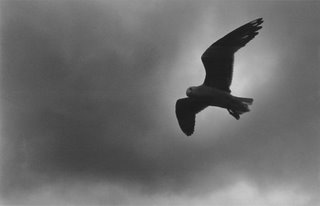
'Flight' is the first group project for Creative I. A three month deadline has been set for this project. It's a topic I might have chosen myself so full credit to the member who submitted the idea.
Above is my starting point. However I will be taking this concept into another direction as I plan on working with an alternative intrepretation. I will post on this at a later date.
The image above is a scan of hand print and was taken in Lyall Bay, Wellington, circa July 2004.
First Creative I exhibition
Head down to the Real Earth Organic Cafe for the first group exhibition of Creative I. The cafe can be found on the corner of Victoria & Bonds Streets, Wellington.
Our images will be on display for a period of 6 weeks.
Our images will be on display for a period of 6 weeks.
Creative I
This month has witnessed the birth of Creative I - a photographic creative cluster. I am proud to be working with such a talented bunch of photographers and I know this group will be producing some amazing material. So make sure you stay in touch and visit creativeinz.blogspot.com
Creative I is a collective of like minded people with the purpose of developing our creative potential. The group will be meeting on a regular basis and constantly working on group and individual projects.
It is our intention to exhibit our work whenever possible. As such we have to venues for this, Cafe Mamba in Plimmers Lane and the Real Earth Organic cafe in Victoria Street.
Creative I is a collective of like minded people with the purpose of developing our creative potential. The group will be meeting on a regular basis and constantly working on group and individual projects.
It is our intention to exhibit our work whenever possible. As such we have to venues for this, Cafe Mamba in Plimmers Lane and the Real Earth Organic cafe in Victoria Street.
Tuesday, April 25, 2006
Photos from the Edge - Part One
The following is part one of a recent interview in the NZ Plumbers Journal regarding my passion for photography.
Part two will be posted shortly.
Part two will be posted shortly.
PHOTOS FROM ‘THE EDGE’ – Part One
Master Plumbers’ Marketing Manager Peter Livingstone likes a challenge, both at work and with his hobby, black and white photography. In fact his hobby offers extra challenges, both creatively and technically, as he strives to produce images that reflect emotion and mood – images with an ‘edge’.
How did he get started? “Photography was a study option at High School and that’s where I learnt the basics,” says Peter. “I entered a few competitions, and won a merit certificate in a national competition.” However, he became “busy with other things” and it wasn’t until a couple of years ago that he decided to pick it up again. “I needed a creative outlet that would allow me to express myself as an individual,” he says, “so I took a refresher course at night school, and I haven’t looked back.”
Actually, he has! A current project of Peter’s is called Driving forward, looking back: Seeing ahead, shooting blind. “I got the idea when on one of many long trips on the open road, and I recalled some earlier advice: ‘the best shot is sometimes behind you, looking back from where you have come’. The concept involved taking shots of the view in my driver’s side wing-mirror, while I concentrated on the road ahead and made no attempt to ‘compose’ the images. I used my favourite black and white film, and a long exposure to give a blurred effect,” he says.
Black and white
Peter prefers to work with black and white rather than colour film. “Black and white strips away the distraction of colour and delivers a stronger, more emotive image. I use Ilford Delta 3200 a lot – actually I’m addicted,” he jokes. “It’s a high speed film and so the images are ‘dark and grainy’ – and I like that. Technically it helps me to achieve the look and feel that I’m trying to convey. Also, it’s good for exploring the qualities of ‘light’ and ‘texture’ which I’m very interested in.” But is is a case of horses for courses and matching the film type to the project he is working on.He says that, personally, he finds clichéd or ‘picture-postcard perfect’ images boring. “Mood and emotion, and composition – that’s what’s important to me.”
Technical know-how
Peter doesn’t use a digital camera – “ I prefer to use traditional methods”, he explains. He experiments with technique – exposure length, deliberate camera movement, lighting and so on, and he hand prints the images in his own dark-room, so as to achieve the ‘impact’ he wants.
“With lighting I’ll consider using available light, directional light or perhaps painting with light – as in my series Show me the way to go home – which features street signs at night. Lighting varies with every project, but I rarely use a flash,” he says. “And the lighting inter-relates to the textural quality of an image in that it can help make a strong image. Or it can be used to heighten the ‘contrast’ between light and shadowy areas. All these elements have to be manipulated in such a way as to produce the results I want,” Peter says.
“Looking at other pictures is a great way to learn. But you must do more than just ‘look’,” says Peter, “You have to really think about all the details that combine to make a great photograph and what effect you are trying to achieve before you even activate the shutter.” He recommends going to as many exhibitions as you can manage to study the photographs on show. You’ll be glad you did!
Editor: Next issue Peter tells us about the creative process that he applies to every project he undertakes, the creative cluster that provides support and criticism, and more on his current and future projects. For more of Peter’s photos see: www.lightandtexture.blogspot.com
Master Plumbers’ Marketing Manager Peter Livingstone likes a challenge, both at work and with his hobby, black and white photography. In fact his hobby offers extra challenges, both creatively and technically, as he strives to produce images that reflect emotion and mood – images with an ‘edge’.
How did he get started? “Photography was a study option at High School and that’s where I learnt the basics,” says Peter. “I entered a few competitions, and won a merit certificate in a national competition.” However, he became “busy with other things” and it wasn’t until a couple of years ago that he decided to pick it up again. “I needed a creative outlet that would allow me to express myself as an individual,” he says, “so I took a refresher course at night school, and I haven’t looked back.”
Actually, he has! A current project of Peter’s is called Driving forward, looking back: Seeing ahead, shooting blind. “I got the idea when on one of many long trips on the open road, and I recalled some earlier advice: ‘the best shot is sometimes behind you, looking back from where you have come’. The concept involved taking shots of the view in my driver’s side wing-mirror, while I concentrated on the road ahead and made no attempt to ‘compose’ the images. I used my favourite black and white film, and a long exposure to give a blurred effect,” he says.
Black and white
Peter prefers to work with black and white rather than colour film. “Black and white strips away the distraction of colour and delivers a stronger, more emotive image. I use Ilford Delta 3200 a lot – actually I’m addicted,” he jokes. “It’s a high speed film and so the images are ‘dark and grainy’ – and I like that. Technically it helps me to achieve the look and feel that I’m trying to convey. Also, it’s good for exploring the qualities of ‘light’ and ‘texture’ which I’m very interested in.” But is is a case of horses for courses and matching the film type to the project he is working on.He says that, personally, he finds clichéd or ‘picture-postcard perfect’ images boring. “Mood and emotion, and composition – that’s what’s important to me.”
Technical know-how
Peter doesn’t use a digital camera – “ I prefer to use traditional methods”, he explains. He experiments with technique – exposure length, deliberate camera movement, lighting and so on, and he hand prints the images in his own dark-room, so as to achieve the ‘impact’ he wants.
“With lighting I’ll consider using available light, directional light or perhaps painting with light – as in my series Show me the way to go home – which features street signs at night. Lighting varies with every project, but I rarely use a flash,” he says. “And the lighting inter-relates to the textural quality of an image in that it can help make a strong image. Or it can be used to heighten the ‘contrast’ between light and shadowy areas. All these elements have to be manipulated in such a way as to produce the results I want,” Peter says.
“Looking at other pictures is a great way to learn. But you must do more than just ‘look’,” says Peter, “You have to really think about all the details that combine to make a great photograph and what effect you are trying to achieve before you even activate the shutter.” He recommends going to as many exhibitions as you can manage to study the photographs on show. You’ll be glad you did!
Editor: Next issue Peter tells us about the creative process that he applies to every project he undertakes, the creative cluster that provides support and criticism, and more on his current and future projects. For more of Peter’s photos see: www.lightandtexture.blogspot.com
Thursday, March 16, 2006
colour : kinetic : natural
Wednesday, January 18, 2006
Thursday, January 12, 2006
One from the archive
Tuesday, January 10, 2006
Project update
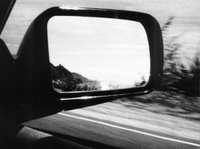

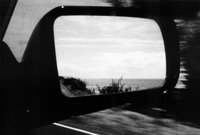
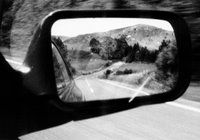
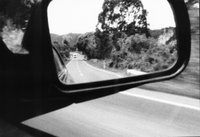
Ok, here's a few rough scans (I am yet to manipulate any of these images in the darkroom) for my new series: Driving forward, looking back : Seeing ahead, shooting blind.
This gives a general idea of what I am trying to achieve. I feel I still have work to do to really define the results I want and if I am to be honest this is a project that will continue to evolve not over months but years.
But it's great fun, a challenge (driving and taking the un-composed shots simultaneously) and exciting reviewing the results.
Pics taken on Nikon F65 with Ilford Delta 3200.
A family shot
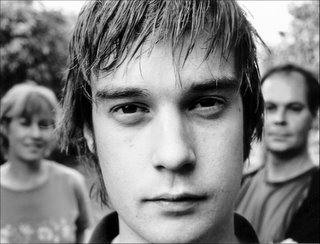
The following pic is from a session taking shots of Ewen, Lynda & Matt. It best captures what I wanted to portray of this part of the Livingstone Clan. In saying that I intend on reshooting the series as during this session I only had 4 minutes with Matt before he had to leave.
Pic taken on Mamiya ProTl 645 80mm lens using Ilford HP5 400
Thursday, November 24, 2005
Ghosts & Ghouls
Tuesday, October 11, 2005
Project underdevelopment
Coming next is my new series: Driving forward, looking back : Seeing ahead, shooting blind.
The concept has been developed with the first attempt at shooting it taking place over Labour weekend. More specifically on the drive to and then back from Napier.
The idea for this series germinated from many long trips on the open road and a piece of advice I once recieved - "The best shot is sometimes behind you, looking back from where you have come".
So what is the concept? Well, taking shots of the view in my drivers side window (Driving forward, looking back), long exposure for a blurred background and once again using Ilford Delta 3200 (my favourite b & w film). Initially. I may switch to Ilford HP5 400. All shots will be taken while I am concentrating on the road ahead, so I will not be composing the images at all (seeing ahead, shooting blind).
Stay tuned to see how it all turns out.
The concept has been developed with the first attempt at shooting it taking place over Labour weekend. More specifically on the drive to and then back from Napier.
The idea for this series germinated from many long trips on the open road and a piece of advice I once recieved - "The best shot is sometimes behind you, looking back from where you have come".
So what is the concept? Well, taking shots of the view in my drivers side window (Driving forward, looking back), long exposure for a blurred background and once again using Ilford Delta 3200 (my favourite b & w film). Initially. I may switch to Ilford HP5 400. All shots will be taken while I am concentrating on the road ahead, so I will not be composing the images at all (seeing ahead, shooting blind).
Stay tuned to see how it all turns out.
Show me the way to go home

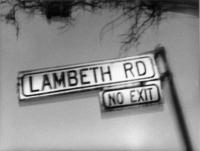
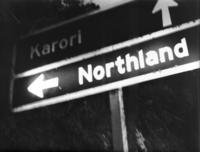
This little piece was born out my desire to work more with Ilford Delta 3200 and to create a series where the light was painted on. So, combining both those elements I have created this short series of the street signs around my home.
The images were taken approx 45 mins after sunset with the signs illuminated by torch with deliberate camera movement, using Ilford Delta 3200 and taken on my Mamiya 645 Pro tl.
These are scans of hand printed images.
What I like about this series is the contrasty, grainy nature of these images. A look and feel I strive to achieve which can be noted in previously posted images.
Tuesday, August 02, 2005
Drinking - Reality TV. A creative concept
Monday, August 01, 2005
Tuesday, July 12, 2005
Future group activity
Last night the group reconvened to discuss future field trips.
The following list is the output from last nights session over a nice glass of red (Grant Burge - Shiraz)
Locations:
Old Karori Cemetery
Mt Vic - Town Belt
Makara Beach and the gun emplacements
Night time - Courtenay Place
Markets - Porirua
Otaki Beach
Petone industrial area
Wellington Railway Station
Fort Balance
Themes/Concepts:
Black & White
Treasure hunt
Movie poster
Emotions
Six senses - smell, hear etc
Lines from a song
CD cover
Colours - concentrating on maybe one colour
The four elements - earth, wind, fire & water
Perspective
We will be meeting again on Thursday 21 July for a night time shoot. Bruce C is to set the theme on the night.
Monday, June 27, 2005
Zoomania
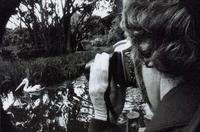
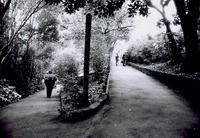
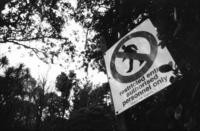
The team from The Creative Eye (well half of the class) descended on Wgtn Zoo on Saturday afternoon for a couple hours of shooting. No need to worry, no animals were harmed in the making of our creative interpretations of zoo life. Armed (there I go again) with only our camera gear and our designated animal personality we set forth to untap the treasure trove of photographic images that the Zoo contains.
For me shooting under the guise of a Merkat initially proved to be an interesting challenge. Not that the challenge deminished as the day progressed but simply the enjoyment increased as the difficulty of getting into character decreased. I like to think I've taken some 'keepers'.
All in all it was a fun day. Ideally I would like to continue with this concept. I am sure the interest is there in the group to continue to do so on a monthly basis. My initial thoughts would be for us to meet and draw up a list of possible venues and topics with each member taking turns to decide the topic of the day. It would be interesting for everyone to be given the same topic to see how we individually interpret it.
Of course the real value will be in meeting after the photo shoot to compare, critique and be inspired by the groups work.
Stay tuned for developments.
Friday, June 24, 2005
Landscape of the Body

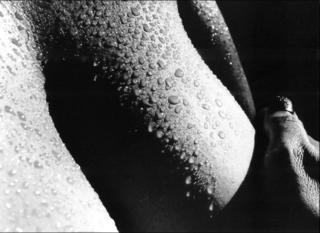
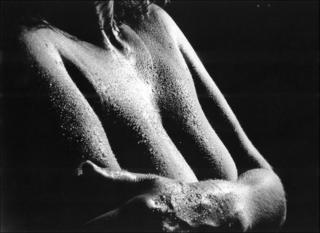
My focus (pardon the pun) now turns to my next project - Landscape of the Body. A subject that has been under development for a number of months. A significant amount of prework has been undertaken covering both the technical and creative processes.
The puropse of the project is to explore the human (female) form. This will be another black & white body of work (not another pun), tightly cropped with strong (although somewhat softened where required) directional light. It is vey much a light and texture project.
For some of you it is an extension of a series I shot earlier this year (as shown to the left) but concentrating on other parts of the body and the relationship with shape and light.
In fact I have two other extensions to this concept that I will pogress onto once this piece is complete.
With the technical issues and composition concepts sorted my attention now turns to securing someone to pose for me.
World Press Photo Exhibition
This is a must see if not for the quality of the photography but to reinforce the fact we have a wonderful life and live in secure democratic country.
Venue - Shed 11
Till 10 July 2005
For more info visit www.worldpressphoto.nl & www.wellingtonnz.com/Events/WorldPressPhotoExhibition.htm
Venue - Shed 11
Till 10 July 2005
For more info visit www.worldpressphoto.nl & www.wellingtonnz.com/Events/WorldPressPhotoExhibition.htm
What a difference a day makes
It's amazing how much difference a day can make when reviewing where you are at in your creative process. After beginning the week questioning whether I was on top of my project and to be honest I wasn't sure if I was hitting the mark. The only thing I felt I had made contact with was the wall. I'd hit the wall creatively.
So a day away from current project and a night in the darkroom has made a huge impact. I stepped back from my Drinking - Reality TV project for a few days and then reviewed my work to date. Only to reveal that I had nailed it. Well to my expectations anyway. On top of that was an evening spent in the darkroom to take these shots one stage further. The result of all this is a body of work I am happy to present to my peers.
So a day away from current project and a night in the darkroom has made a huge impact. I stepped back from my Drinking - Reality TV project for a few days and then reviewed my work to date. Only to reveal that I had nailed it. Well to my expectations anyway. On top of that was an evening spent in the darkroom to take these shots one stage further. The result of all this is a body of work I am happy to present to my peers.
Monday, June 13, 2005
The stalking continues
My adventures of capturing unsuspecting Wellingtonians continued over the weekend. It all started on Friday night at a farewell at Red Square in Courtenay Place. Shots were taken and drinks were had. At first as suspected I did feel a bit conspicuous but once I got snapping I was fine. Although I am sure I was assisted by the Henekin I was consuming as well. So plenty of pics were taken while I was in a state to do so.
Over the course of the weekend I managed to spend time taking photos in the Deli in Aro St, Fidels and the Tasting Room. It was a case of making sure I had the camera with me all the time especially when I thought I might be in a situation I could use for my conceptual piece.
One realisation I did have whilst at Fidels which annoyed me, was the fact I should be using the remote for my camera (I had left it at home in my camera bag). In this way I can strategically place my camera and without having to touch it (and hence alert people to my actions) I can use the remotre to trip the shutter. I did experiment with this technique at the Tasting Room and will continue to experiement.
But after a rather full weekend of activity I am now quite used to taking pics in a public place. In fact I now feel rather cheeky in trying to get as many shots I can of unsuspecting victims. Which I feel rather pleased about.
So now I'm keen to see the results of the weekends adventures and to critique my work so that I can hone this skill even further.
Over the course of the weekend I managed to spend time taking photos in the Deli in Aro St, Fidels and the Tasting Room. It was a case of making sure I had the camera with me all the time especially when I thought I might be in a situation I could use for my conceptual piece.
One realisation I did have whilst at Fidels which annoyed me, was the fact I should be using the remote for my camera (I had left it at home in my camera bag). In this way I can strategically place my camera and without having to touch it (and hence alert people to my actions) I can use the remotre to trip the shutter. I did experiment with this technique at the Tasting Room and will continue to experiement.
But after a rather full weekend of activity I am now quite used to taking pics in a public place. In fact I now feel rather cheeky in trying to get as many shots I can of unsuspecting victims. Which I feel rather pleased about.
So now I'm keen to see the results of the weekends adventures and to critique my work so that I can hone this skill even further.
Thursday, June 09, 2005
Upcoming exhibition at Photoscape
Photoscape gallery which is Courtenay Place (above Sahara and along from United Video) is opening a two new exhibitions which run from 16 June through to 8 July.
The exhibition displays the work of Belinda Brown - Vive la Difference & Jodi Ruth Keet - Permanence.
For more information visit www.photospace.co.nz/expo094.htm
I've always enjoyed the work on display at Photoscape so I encourage you to pay a visit.
Inspiring.
The exhibition displays the work of Belinda Brown - Vive la Difference & Jodi Ruth Keet - Permanence.
For more information visit www.photospace.co.nz/expo094.htm
I've always enjoyed the work on display at Photoscape so I encourage you to pay a visit.
Inspiring.
Stalking unsuspecting Wellingtonians
I ventured out at lunchtime today for another foray into shooting from the hip. That involves me having my camera over my shoulder and taking pics without looking through the view finder.
I must say I found this a lot easier than my attempt on Tuesday and I'm more confident in taking pics of people on the street. Even though it was rather covert. But all bodes well for me venturing into street photography. Especially now that I am more intune to the number of potential shots available to me.
One sneeky technique I used was to line up my subject/victim and appear to be using my mobile to txt whilst my free hand carefully triggered the shutter. Sneaky to say the least.
I'll post some of the results from todays activities some time next week when I have the film back from the lab.
I must say I found this a lot easier than my attempt on Tuesday and I'm more confident in taking pics of people on the street. Even though it was rather covert. But all bodes well for me venturing into street photography. Especially now that I am more intune to the number of potential shots available to me.
One sneeky technique I used was to line up my subject/victim and appear to be using my mobile to txt whilst my free hand carefully triggered the shutter. Sneaky to say the least.
I'll post some of the results from todays activities some time next week when I have the film back from the lab.
Creative Obstacles
Ok here's my 2 cents worth.
Rick, for me, impact is about strength. Ensuring the person viewing your work is hit between the eyes with the message you are trying to convey. How do we/I do that? Well my theory is to strip away any unnecessary elements. Keep it simple and don't over think it. Get to understand exactly what you are trying to convey then try and invoke that response from the viewer. Don't tell them, make them experience it. So think about what emotional triggers your work should include to solicit the response you want to achieve. As Antonia said - Soft/hard, focussed/blurry, b&w/colour composition etc.
Bruce - I guess a lot of it depends on how you define originality. Is it capturing an image that no one else has ever taken or it is taking a concept or subject that has been used before and turning it on it's head and having an alternative take on it? It can be both. If you get a response of "I've never looked at that like that before" isn't that being original as well. So interpretation is just as important if not more than the subject. I've seen images that I've liked but have thought of alternative ways of shooting the subject.
Antonia, time is always a issue in life. We lead such frantic lifestyles. Sometimes it is necessary to purposely make an appointment with yourself to do something creative. After a while you find that you don't have to make such a conscious effort to do so as it becomes a habit. But does it have to happen in such a rigid manner? Probably not. But initially we do have to make that effort. I don't believe creativity is something you switch on or off, but what is important is to discover the triggers that prompt you to be creative. I think we're all more creative than what we credit ourselves to be. Take 10 mins and sit down and make a list of the times/places you feel your at your creative best. See what you come up with.
For me, well my obstacle for my creative piece is to get out and into the environment to take my pics. I need to go into bars/cafes at night and take pictures of people for my drinking/reality TV concept. To be honest I'm not 100% comfortable doing this. Has anyone else done this before? I feel very conspicuous going out and taking these shots. Enough of my ramblings and back to the coal face. Peter
Rick, for me, impact is about strength. Ensuring the person viewing your work is hit between the eyes with the message you are trying to convey. How do we/I do that? Well my theory is to strip away any unnecessary elements. Keep it simple and don't over think it. Get to understand exactly what you are trying to convey then try and invoke that response from the viewer. Don't tell them, make them experience it. So think about what emotional triggers your work should include to solicit the response you want to achieve. As Antonia said - Soft/hard, focussed/blurry, b&w/colour composition etc.
Bruce - I guess a lot of it depends on how you define originality. Is it capturing an image that no one else has ever taken or it is taking a concept or subject that has been used before and turning it on it's head and having an alternative take on it? It can be both. If you get a response of "I've never looked at that like that before" isn't that being original as well. So interpretation is just as important if not more than the subject. I've seen images that I've liked but have thought of alternative ways of shooting the subject.
Antonia, time is always a issue in life. We lead such frantic lifestyles. Sometimes it is necessary to purposely make an appointment with yourself to do something creative. After a while you find that you don't have to make such a conscious effort to do so as it becomes a habit. But does it have to happen in such a rigid manner? Probably not. But initially we do have to make that effort. I don't believe creativity is something you switch on or off, but what is important is to discover the triggers that prompt you to be creative. I think we're all more creative than what we credit ourselves to be. Take 10 mins and sit down and make a list of the times/places you feel your at your creative best. See what you come up with.
For me, well my obstacle for my creative piece is to get out and into the environment to take my pics. I need to go into bars/cafes at night and take pictures of people for my drinking/reality TV concept. To be honest I'm not 100% comfortable doing this. Has anyone else done this before? I feel very conspicuous going out and taking these shots. Enough of my ramblings and back to the coal face. Peter
Subscribe to:
Comments (Atom)
